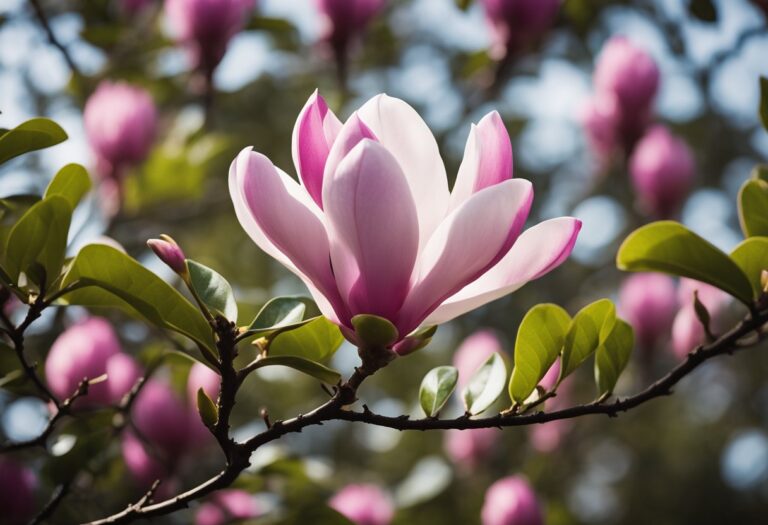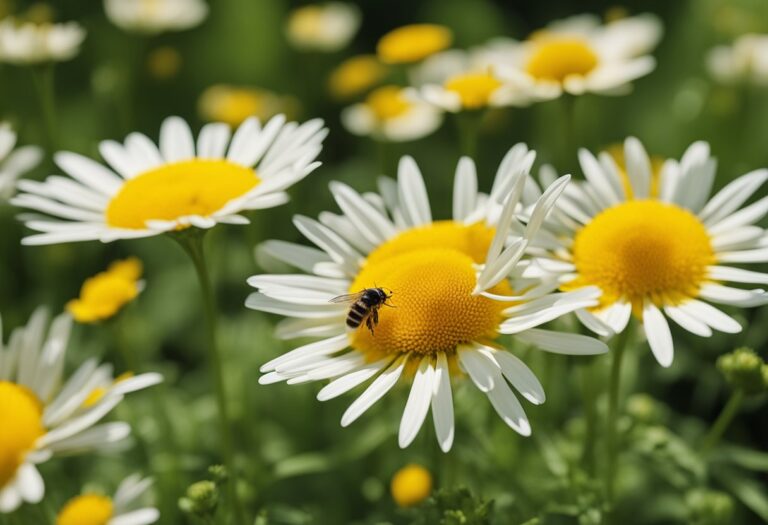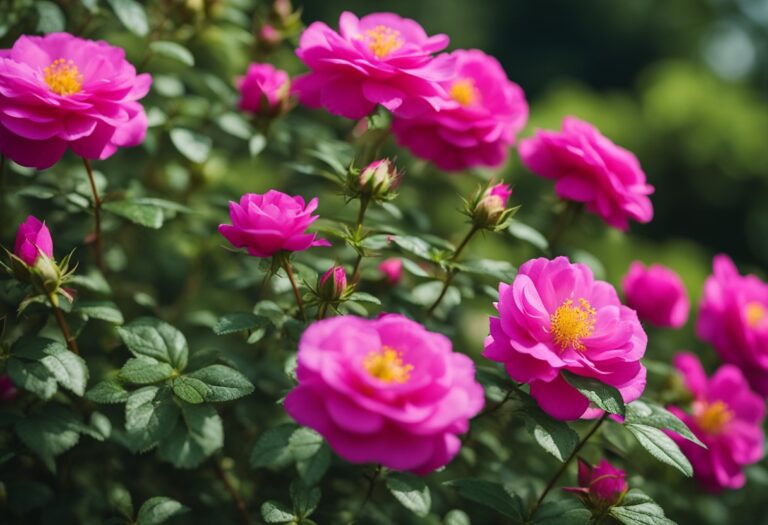Origin and Classification

Your exploration of the ‘Thérèse Bugnet’ rose will take you through its breeding lineage and the distinguishing traits that classify it as part of the Rugosa rose category.
Breeding History
‘Thérèse Bugnet’ originates from the work of George Bugnet, a Canadian hybridizer, who introduced this cultivar in the mid-twentieth century. Named after one of his daughters, it represents a significant development in cold-hardy roses. This particular rose is a hybrid cultivar, which means it was purposefully bred for certain desirable characteristics, such as its exceptional hardiness and vigorous growth.
Rugosa Rose Characteristics
The Rugosa class, to which ‘Thérèse Bugnet’ belongs, is renowned for several distinct features.
Primarily, Rugosa roses are:
- Hardy: They withstand harsh climates, enduring cold winters.
- Robust: These roses exhibit strong, dense growth.
- Disease resistant: Rugosa roses have a higher resistance to common rose diseases.
Meanwhile, significant traits of ‘Thérèse Bugnet’ include its lustrous red canes, thorny branches, and trademark double, ruffled pink flowers. The plant is recognized for its hardiness, capable of surviving in USDA zone 3, which endures winter temperatures down to -40°F (-40°C).
Cultivation

When cultivating the Thérèse Bugnet rose, your primary focus should be on planting location, ongoing care, and addressing any potential plant health concerns.
Planting Recommendations
Choose a site with full sun to partial shade exposure for optimal growth.
Plant your Thérèse Bugnet roses in well-draining soil, ideally in the spring or fall.
Space them approximately 5-6 feet apart to allow for mature growth and air circulation.
Next, dig a hole that is twice as wide and the same depth as the root ball. Then, position the plant so that the graft union is several inches below the soil surface in colder zones.
Care and Maintenance
Regularly water your roses deeply to encourage root growth, especially during extended dry periods.
Mulch around the base to retain moisture and regulate soil temperature.
Fertilize in the early spring with a balanced fertilizer and again after the first wave of blooming if desired.
Lastly, prune in late winter or early spring, removing dead or diseased wood and thinning out crowded areas to promote air flow.
Pest and Disease Management
Inspect plants often for signs of pests like aphids or diseases such as powdery mildew.
Treat infestations early with appropriate fungicides or insecticides, or utilize organic remedies like neem oil.
Engage in preventative measures, such as avoiding overhead watering and cleaning up leaf debris to reduce the risk of fungal diseases.
Physical Description

The ‘Thérèse Bugnet’ is a distinctive species of rose recognized for its robust growth and the charming pink flowers it produces. Your appreciation for its beauty is likely to grow as you become familiar with its specific traits.
Flower Characteristics
The ‘Thérèse Bugnet’ rose blooms with double, ruffled flowers that make a striking statement.
Here are their defining features:
- Color: Bright, lipstick pink
- Size: Blooms can reach up to 4 inches across
- Fragrance: Strong and sweet, filling the surrounding air
- Bloom Season: Recurrent flowering throughout the growing season
Foliage and Growth Habit
As for the plant itself, the ‘Thérèse Bugnet’ possesses certain characteristics that contribute to its hardiness and aesthetic appeal:
- Leaves: Grey-blue-green with a quilted appearance
- Disease Resistance: High resistance to common diseases
- Growth Size: Typically grows to 5-7 feet in height and width
- Hardiness: Tolerant of cold, withstanding temperatures as low as -40°F (-40°C)
- Thorns: Stout and numerous on branches
Garden Uses
The Thérèse Bugnet Rose is a versatile shrub that thrives in a variety of garden settings. Its hardy nature and appealing aesthetics make it suitable for several uses in your landscape design.
Landscape Design
You can utilize the Thérèse Bugnet Rose effectively in landscape design due to its rounded, upright shape and dense foliage.
It’s ideally suited to form a natural hedge or a border for a garden path.
With a height and spread of about 5-7 feet, this rose fits well in mixed shrub borders and adds structure to the garden throughout the year, even when not in bloom.
Its old-fashioned form and vibrant blossoms also allow it to stand out as an accent plant within a garden bed.
Companion Plants
When selecting companion plants for Thérèse Bugnet, consider species that complement the rose’s bright pink blooms and fragrant scent.
Suitable companions include:
- Perennials: such as lavender (Lavandula), which offers a contrasting color and scent, or catmint (Nepeta), which has a soft texture and a soothing blue hue.
- Annuals: like marigolds (Tagetes), which can add a pop of gold or orange and help deter pests.
- Bulbs: like daffodils (Narcissus), which provide an early spring color before the rose fully leafs out.
Pair your Thérèse Bugnet with other plants that favor the same soil conditions: well-drained soil with moderate moisture. Always ensure that your chosen companions do not overpower your rose with aggressive growth.
Propagation Methods

When you decide to propagate the Thérèse Bugnet rose, you have a few reliable methods to choose from. Each has its own set of steps, which are outlined for your convenience.
- Cuttings: This is a common technique for rose propagation.
- Take a cutting of about 6 inches from a healthy stem.
- Remove the leaves from the lower half of the stem.
- Dip the cut end into rooting hormone to encourage root growth.
- Plant the cutting in a pot filled with a mix of peat and perlite.
- Keep the soil moist and in a well-lit area until roots develop.
- Layering: An alternative method where you encourage the plant to root while still attached to the parent.
- Choose a long, flexible stem and slightly wound it by removing a strip of bark.
- Bend the stem down to the soil and secure it in place.
- Cover the wounded part of the stem with soil, leaving the tip exposed.
- Once roots form, cut the new plant from the parent and plant it separately.
- Division: Best performed in late winter or early spring.
- Locate the suckers that grow from the base or roots of the parent plant.
- Carefully dig out the suckers, making sure to take a portion of the roots.
- Replant the suckers in a suitable location immediately.
For best results, ensure you provide consistent moisture and protect new propagations from extreme temperatures until they are well established. Remember, patience is key, as roses can take time to develop robust root systems.
Frequently Asked Questions

In this section, you’ll find the answers to some common questions about the Therese Bugnet rose, providing insights into care, fragrance, pest resistance, planting, invasiveness, and ideal planting locations.
How do you care for a Therese Bugnet rose?
Your Therese Bugnet rose will thrive with full sun to partial shade and well-drained soil. It is hardy and can tolerate cold temperatures down to USDA zone 3.
Water regularly, but allow the soil to dry out between watering. Minimal pruning is required, as this shrub can grow quite large naturally.
What distinguishes Therese Bugnet rose from other Rugosa roses in terms of fragrance?
The Therese Bugnet rose is celebrated for its striking fragrance which varies from mild to very strong.
It emits a spicy scent, sometimes likened to the aroma of old-fashioned Damask roses, that can perfume an entire garden.
How resistant is the Therese Bugnet rose to deer and other pests?
The Therese Bugnet rose, while not completely deer-resistant, is less palatable to deer compared to many other plants.
It also has a level of resistance to common pests, but it can be susceptible to rose stem girdlers and mild cases of black spot disease.
What spacing is recommended when planting Therese Bugnet rose bushes?
When planting Therese Bugnet rose bushes, space them about 5 to 7 feet apart.
This allows each plant enough room to grow to its full size, which can range from 5 to 7 feet tall and as wide, and ensures proper air circulation to keep the plants healthy.
Can Rosa rugosa varieties, such as Therese Bugnet, become invasive?
Rosa rugosa varieties, including Therese Bugnet, have the potential to become invasive in certain areas due to their vigorous growth and ability to spread through underground runners.
It’s important to monitor their growth and manage spreading to ensure they don’t outcompete native plants.
What is the ideal location to plant a Therese Bugnet rose for best growth?
For optimal growth, plant your Therese Bugnet rose in a location that receives at least six hours of sunlight per day. An area with well-draining soil and protection from strong winds will also contribute to a healthy and robust plant.










